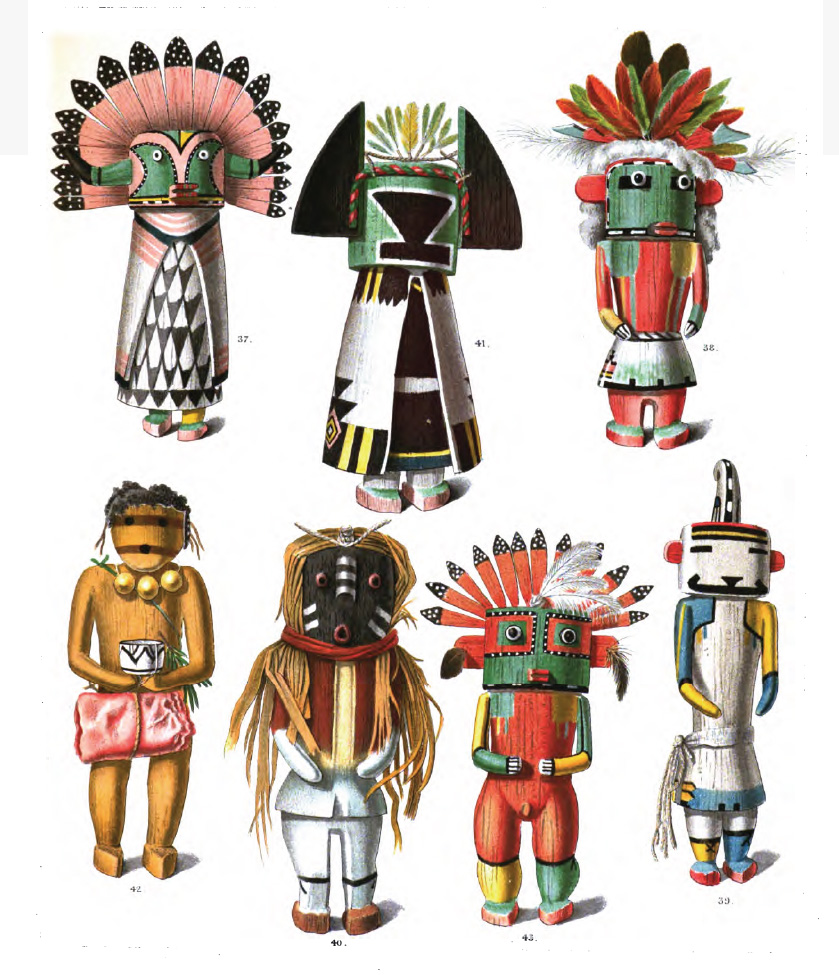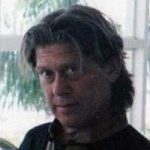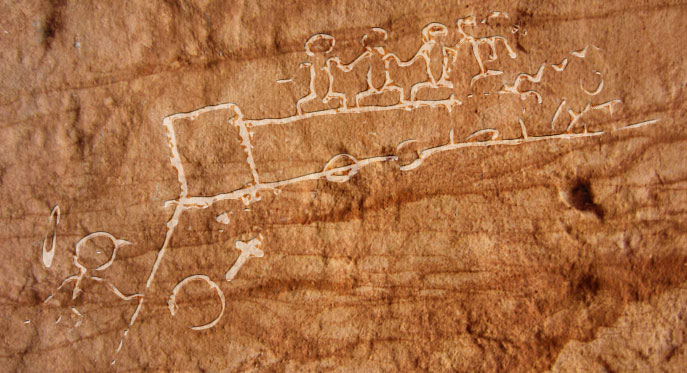There used to be a fable, commonly imposed as fact on schoolchildren in the United States, that in Columbus’ time nearly everyone believed the Earth was flat. Fortunately, this untruth has been quietly abandoned, although it has been supplanted by another myth, this one crediting the ancient Greeks with having first disproved the “flat Earth” concept.
History professor Jeffrey Burton Russell noted that with few exceptions “no educated person in the history of Western Civilisation from the third century B.C. onward believed that the earth was flat”i —a position that is no doubt true yet still reflects a limited Western perspective. It fails to acknowledge that aboriginal and ancient people, spanning far back into the last ice age, knew the Earth to be spherical. They knew the nature of creation to be cyclical (or vortical), and they acknowledged, revered and cultivated understanding of universal law. Evidence of their seemingly impossible technological manifestations—the Great Pyramid being among the most widely recognised, with many others gaining attention—lies in ruins around the Earth, the implications largely ignored by experts who can’t adequately explain them within academically accepted contemporary models.
The Hopi Indians of the US Southwest represent the oldest continuous Native American group in the current United States. Contradicting professional opinion, the Hopi claim they did not come to this continent across the Bering Strait but north from South America, according to Oswald “White Bear” Fredericks, whom I met twice as a teenager through my high school anthropology teacher. White Bear (1905–1996) was the primary Hopi consultant for Frank Waters’ Book of the Hopi,ii a common title in university libraries. During our current period of history, the Bear Clan supersedes all other clans in authority and serves as the tribe’s historians. It preserves the knowledge and memory of Hopi migrations and history, so White Bear proved to be an unusually valuable source. Even if Western orthodoxy won’t accept the truth of his startling claims—that technological civilisations have previously arisen and fallen, and that beings from other habitable planets have visited Earth—it must be conceded that his claims are at least ethnographically valid. It’s true that the Hopi sincerely believe their tribal history, and it might benefit us to consider seriously what White Bear said.
Essentially, White Bear described a succession of cycles, over vast periods of terrestrial time, that involve the development and destruction of societies. Humanity, he said, advances for a long period—a golden age—then progressively loses contact with its true spiritual nature through egoism and avarice, and this disharmony eventually manifests in the three-dimensional realm as natural disasters, conflicts, wars, environmental degradation and disease. In the Western view, these things happen to us; but in the Hopi world-view, spirit and form intimately intertwine, so mankind’s disharmonious (evil) deeds manifest in the physical environment as crises.
In the late 1970s, a former NASA engineer named Josef Blumrich enlisted White Bear’s help in producing a book in German called Kásskara und die sieben Welten (Kásskara and the Seven Worlds), which has not been published in English. In the course of his research, Blumrich often stayed with White Bear and his wife, Naomi, at their home in Sedona, Arizona. The couple escorted Blumrich to ceremonies on the Hopi reservation, explaining to him what was happening, and arranged for him to interview elders of various clans. Blumrich recorded White Bear, and Naomi transcribed those recordings into a typed and coherent transcript. That manuscript is the basis for Blumrich’s book.

Oswald “White Bear” Fredericks and his wife, Naomi, photographed in 1985 at their home in Sedona, Arizona. (Source: © Henry J. Denny)
A few years ago, I received a partial copy of the document from Henry Denny, the teacher through whom I met White Bear. I recently searched the web for a complete copy, not expecting to find one, and was surprised to find two sources. I enquired, not hearing from one but learning from the other that she had acquired the document in the same way Henry had—directly from White Bear and Naomi. The quoted passages that follow are slightly edited for publication here.
The document begins with White Bear’s introduction. “This is the history of my ancestors and the clans who came to this land. The continent on which my people lived for a long time was sinking into the sea. The people had to leave it and go to a new continent in the east to make a new beginning.”
White Bear described Kásskara as a continent that sank into the Pacific Ocean. He said Hawaii is a remnant of the Hopi ancestors’ original motherland, and Easter Island is the last remaining of several islands that helped Kásskaran refugees cross the vast expanse of ocean to South America. Kásskara was submerging at about the same time as Atlantis was sinking, although Atlantis went down quickly, White Bear said, due to its heavier negative karma. Because Kásskara’s offenses were not as serious, the retribution that its people suffered was lighter and the destruction happened more slowly, allowing the population time to flee.
It was important and necessary, White Bear felt, to inform the world about Hopi history and the previous cycles of advancement and destruction the world has undergone, but he was heavily criticised by some Hopi who believed that he should not have revealed these truths to the masses.
White Bear said, “It is time to speak about our people and to tell you who we are and why we are here in the hope that somebody one day will understand us. Although I am the one who is speaking here, it is the knowledge of the Hopi that you will know. Out of the long story of the Hopi arises a warning for you. You will understand later what I want to say when I tell my story. This is why I speak now. That concerns us all. Perhaps this warning will not come too late.”
A Succession of Worlds
According to White Bear, humankind lived in two other worlds, Tokpela and Tokpa, before emerging into the Third World, Kásskara (coeval with Atlantis), and then into our present Fourth World, Toowakachi. These successive worlds generally correspond to various continents, time periods and changing configurations of global geology through which the Hopi ancestors were granted protection by some very interesting beings whom they call Kachinas—otherworldly denizens with physical bodies who helped them survive planetary cataclysms and directed their migrations. The Kachina dolls known to tourists are simply representations meant to familiarise Hopi children with the various Kachina entities so they don’t fear the dancers during ceremonies.

Drawing of Hopi Kachina dolls from an 1894 anthropology book. (PD0)
In the First World, the “Taiowa” divinity created humans and all things in this universe. He gave us intelligence and the capacity for knowledge,” White Bear said. “He gave man all he needs in his life, and he gave him the laws and duties in this universe, which man must obey.” He explained that the First World was destroyed by fire because people had become malicious. But his people—those who in more recent times became the Hopi—survived the destruction because they had been selected to preserve the knowledge through time. The Second World was destroyed by ice. Once again, his people survived and arrived in the Third World, the third continent. All these and later events are still alive in Hopi ceremonies.
The Third World: Kásskara
“The name of the Third World is Kásskara. Few people today know the significance of this very old word. I learned it from Otto Péntewa (a Hopi elder), who remembered it as the ‘mother ground,'” White Bear said. “We also call it ‘the country of the sun’ because we like to refer to the sun and soil that keep us alive.”
Kásskara was a continent situated mostly south of the equator with a small portion in the north, White Bear said, identical with what we today call Lemuria, or Mu.
“It was a very beautiful country. Compared with today, it was almost a paradise. We worked, but we did not need to work hard. Since our beginnings in the First World, we had followed the plan of our Creator and cultivated our food ourselves,” White Bear said. “In these times we had chosen corn as our principal food, and we brought it to the Second World and we continued to live with it in the Third World. When you see our corn, think of the fact that the Hopis have had it since very old times, since the First World.”
White Bear explained that the Hopi were given knowledge relating to plants and animals. They could communicate with them. They had scientific knowledge but did not use it to manufacture objects that hurt people.
“People then had respect for one another. The clans had their own bosses, but they had in common a respected spiritual leader. In the life of the Hopi there always was a clan that held supremacy for a certain time in order to ensure that we fulfilled our obligations and responsibilities well, like our good behaviour in life,” White Bear said. “When we inherited this world, the Clan of the Bow held the leadership. For this reason, the tribe chief of the Clan of the Bow was Kásskara’s sovereign. At the beginning, all was well in Kásskara. Much later, men gradually began to lose respect for one another. Initially it was just a few, then more and more. As you see we are exactly like other men. I can compare that with what occurs today in the organizations: people want to have some rank and power; they want their share,” White Bear said. “The same thing happened in Kásskara.”
Atlantis
To the east of Kásskara was Talawaitichqua, or “the Eastern country,” which means roughly, “Land of the Morning Sun.” White Bear said there was “a large surface of water” between Kásskara and Talawaitichqua, the land we call Atlantis. “At the beginning of the Third World, people of Atlantis were as peaceful as we were. We have, of course, the same divine origin. They had the same symbols as we had. But with time they changed. They started to explore the secrets of the Creator that Man should not know. There exist secrets which are only intended for the divinity, and when men started to study them, they infringed on this law. In fact, man has the same capacity as the Creator, but the Creator maintains secrets that men should not seek to understand,” White Bear said, noting that this matter concerning the secrets is “very serious.” He drew a parallel to our time to help us understand what the Hopi believe. “Your civilisation developed many things—aeroplanes, for example. When my uncle led me to Oraibi to see the ancient inscription of a jet, which is naturally much older than your jets of today, he said to me, ‘It would be very good to fly again through the air as our people did in the past,'” White Bear explained. “My uncle said, ‘When there is a catastrophe somewhere far away, one can bring help like food, drugs and tools. But an aeroplane can also bring death to people hundreds of miles away, and in doing that one will disobey the divine law.’”
White Bear asked how we can exclude ourselves from responsibility if we assist in conducting research that leads to destructive ends: “Let’s suppose you made a scientific discovery in the field of rocketry and that somebody makes a bad use of your discovery. You would not do it, but it is your discovery,” White Bear insisted. “Do you really know where your responsibility begins and ends?”
The Hopi do not oppose technology, and they endorse research that will help humanity stay alive and healthy. “The Creator wants us to benefit from this life and do as little heavy work as possible, and he wants all that is good, all the joy, all the happiness of this world, to become ours,” White Bear said. “But now [researchers] try to produce artificial life, and one day also a human. Well, these things you should not do!” He said we can summarise all that in two sentences: “The divine Creator said to us, ‘If you want to be my children, you should not use your knowledge to destroy, kill or misuse what I gave you. If you do not respect this law, you are not my children.'”
White Bear said that towards the end of the Third World, a very powerful and beautiful woman rose to become Queen of Atlantis. She used her beauty to manipulate the chiefs of her people, receiving so many jewels that she was given the nickname, “the Turquoise Woman.” She used her powers to subject these personalities, including scientists and politicians, and in this way became sovereign of the entire continent. White Bear pointed out that Atlantis was similar to England—a small country with great influence. Atlantis eventually extended its reach farther to the east, into what we know today as Europe and Africa.
“The inhabitants of Atlantis had researched secrets of the Creator for which they were not spiritually ready. They had obtained knowledge of such things too early and used it to subjugate other people. In doing so, they infringed on the divine order. They also studied other planets, and they even went there,” White Bear said. “These were dead planets where no one could live, so they had to remain on our good old Earth.”
White Bear explained why Atlantis turned against Kásskara. “They knew that morally and spiritually we were much stronger, and that made them envious. This is also why the queen wanted to conquer our country and subjugate our people. She threatened our sovereign [and said she would] join together all her spaceships above our continent and destroy us from up there. But he refused to give in. For a long time, talks were held, which one can also call conferences. All the great men of that time held meetings.
“As I already said, there were among us people who had become avid seekers of status and power. Their religious belief had weakened, and people no longer had respect for one another. We were in a situation which compares very well with the current one.”
“Within time the influence of [Atlantis’s queen] led to a schism between our people. She started to get some of our people on her side—those men seeking power, whom I spoke about. They walked away from our laws and said to themselves, ‘If we choose the side of the people of Atlantis and accept their requirements, we might later acquire a fair share of the power.’
“The malicious ones took over. They had studied many secrets of the Creator which humanity should not know, but we did not take part in this. We wanted to be and remain peaceful people. I believe that actually it was the Creator who used his capacity to keep us away from these things.
“The chiefs met many times. But the group of those who had scientific knowledge was much stronger, and they came to attack my people with the material of their capacities and invention,” White Bear said. “From very high in the air they directed their energetic force on our cities. But those of our people who had not left the true way of our Creator were gathered in a certain area in order to be saved.”
Myths and Prophecies
The Hopi believe that technological civilisations have arisen previously, much further back in time than most conventionally educated people can accept. Our general cultural timeline sets “Western civilisation” as being about 6,000 years old. We vaguely acknowledge that the ancient cultures of China and India might be 8,000 or 10,000 years old, but the notion that there existed any advanced civilisation before the end of the last ice age just isn’t occurring to most of us. As author Graham Hancock said so aptly, “I am convinced by the evidence that we are a species with amnesia. We have forgotten something of great importance from our past.”iii
In the dialogue of Timaeus, even Plato’s unfinished account of Atlantis suggests we should push back the dates of civilisation to at least 11,000 years. In the account, Solon was told by an Egyptian temple priest at Sais of Egypt’s ancient age. “O Solon, Solon, you Hellenes are never anything but children, and there is not an old man among you,” the priest said. Solon asked him what he meant. “I mean to say that in mind you are all young; there is no old opinion handed down among you by ancient tradition, nor any science which is hoary with age. And I will tell you why. There have been, and will be again, many destructions of mankind arising out of many causes; the greatest have been brought about by the agencies of fire and water, and other lesser ones by innumerable other causes,” he said.
The priest explained to Solon that certain myths actually refer to astronomical phenomena. “There is a story, which even you [Greeks] have preserved, that once upon a time Phaethon, the son of Helios, having yoked the steeds in his father’s chariot, because he was not able to drive them in the path of his father, burnt up all that was upon the earth, and was himself destroyed by a thunderbolt. Now this has the form of a myth, but really signifies a declination of the bodies moving in the heavens around the earth, and a great conflagration of things upon the earth, which recurs after long intervals…,” the priest told him, which may suggest why many ancient cultures diligently monitored astronomical cycles.
Like the Hopi, the temple priest knew that over the ages technological civilisations have been destroyed by cataclysms and forgotten. Today, however, the prevailing attitude among most academics compels them to dismiss Plato’s Atlantis tale as fabulous, despite its detail, just as others ignore the advanced mathematics and engineering necessary to have sited and built the Great Pyramid.
The Hopi don’t perceive time in a straight line as we tend to. While we may assume that our modern civilisation represents a pinnacle of human technological achievement, the Hopi wait patiently on their remote mesas for our version of civilisation to disappear, which it inevitably must because it’s disharmonious with the laws of the universe.
White Bear said he and other elders had met in a kiva at Shongopovi (Hopiland) to discuss their current situation. “We see at this moment the same things occurring as those that occurred right before the destruction of the Third World. We are concerned because we know what will arrive,” White Bear said. “We know that we have reached the point of no return.” ∞
Endnotes
i Russell, Jeffrey Burton, “The Myth of the Flat Earth”, American Scientific Affiliation Annual Meeting, 4 August 1997, http://tinyurl.com/9358h
ii Waters, Frank, Book of the Hopi, Viking, New York, 1963
iii Hancock, Graham, preliminary interview for The Mysterious Origins of Man NBC TV special, 1996 https://www.youtube.com/watch?v=u__Zm4stnug.
Reprinted from NEXUS magazine, February-March, 2016
A version of this article has also been published on Ancient Origins, 24 December 2017
Shawn Hamilton can be reached at [email protected]. For more information, visit his web site: http://theswillbucket.com/.







This is the first installment in a five-part series that Nexus magazine published between February 2016 and October 2019. The articles involve Oswald “White Bear” Fredericks, a Hopi elder through whom Frank Waters wrote “Book of the Hopi”.
I knew White Bear through my high school anthropology teacher, and during two summers in the late 1970s, the three of us visited Hopi-related archaeological sites in the American southwest, including the stunning cliff dwellings at Mesa Verde, Colorado. It’s worth considering what White Bear has to say as it’s relevant to our current situation.
SHAWN; PROFOUND. COINCIDES WITH SO MANY OLDER SPIRITUAL BELIEFS AROUND THE WORLD. PRAY THAT WE UNDERSTAND.
I appreciate your communiqué, Ken. It’s good to hear a voice in the wilderness occasionally! Thank you!
It’s inevitable it’s destiny nothing can be done alpha/omega
Perhaps, but I still enjoy writing about it!